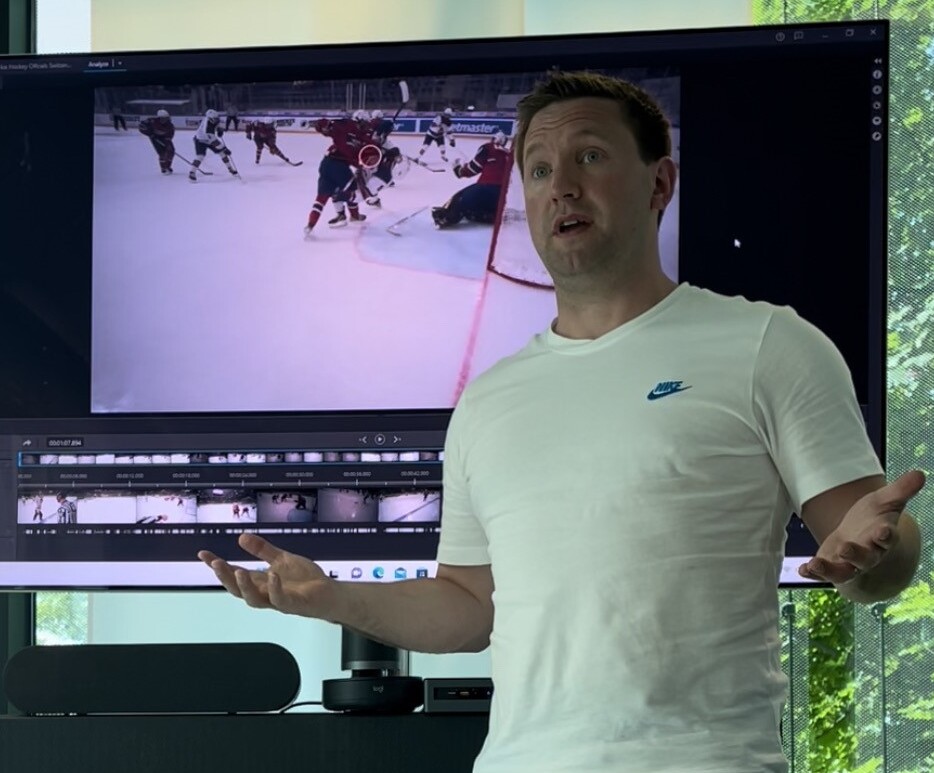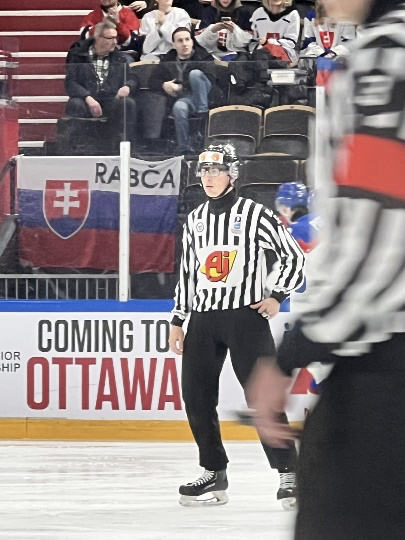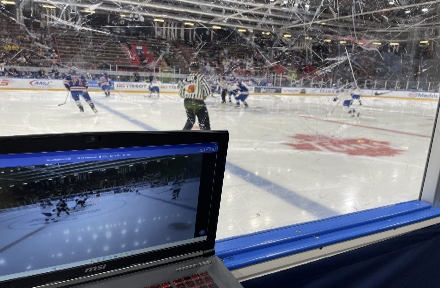World First with International Ice Hockey Federation Officials
"I wore the glasses when we were on the ice during the actual games. It was cool to see exactly where I was focusing, for how long and how this impacts decision making. I can see this being used as a valuable training tool in the future for all officials"
- IIHF Ice Hockey U20 World Championships Gold Medal Match Official
Introduction
During the 2024 U20 Ice Hockey World Championships in Sweden, millions of viewers witnessed the first time two eye trackers were used in a live sanctioned game.
The game was Slovakia vs Switzerland with Ice hockey officials Daniel Eriksson (Swe) & Killian Hinterdobler (Ger) and began a world leading approach to training development to explore the role of the visual system when making decisions.

Context
It is not an exaggeration to state that officials’ decisions can directly affect the game dynamics in any sport.
The awarding of penalties, letting the game flow or calling offsides can throw the balance of the game in different directions. It can be argued that Ice hockey is the most dynamic sport there is. Can you think of a quicker one?
The speed at which the puck travels, the ability of the players to quickly change direction and how often players change on the ice are only a few factors to consider.
That's not even going into the skating skills needed by the officials to skate backwards, while still focusing on relevant information and keeping up with play without obstructing it.
They are something to be admired. With athletes becoming faster, stronger, and more tactically aware the decision-making of officials has emerged as a hot topic in recent years to ensure they are keeping up with play to serve game.

Decision Making of Officials
To ensure decisions are effective as possible the International Ice Hockey Federation (IIHF) utilise a 4-official system, consisting of 2 referees, who ultimately govern the severity of penalty calls for example, and 2 lines person, who focus on offsides and icings etc.
Over the years officials have been coached to engage in certain visual strategies e.g. scan higher during open play and low around the net for referees and then lower-level search patterns for linesperson.
Another layer to this though is the 4-official system, it relies heavily on trust, understanding and a level of experience when part of it, as it is not an approach utilised by all federations.

Eye Tracking World Firsts With Ice Hockey Officials
It has already been highlighted that the visual system plays a pivotal role in the ability to make effective decisions.
Up until 2023 the IIHF relied on game footage, body and head cameras to understand the process officials went through to pick up the information needed to make decisions.
However, on 20th April 2023, in the Male U18 Ice Hockey World Championship game of USA vs Latvia, sporting history was made with referee Riku Brander (Fin) wearing G2 Tobii eye tracking technology for the first time in a live sanctioned competition.

Why Use Eye Tracking in Officiating
This approach is truly world leading and the IIHF should be commended for their dedication to assist their officials to serve the game as best they can. It has provided the IIHF officials and coaching staff a never seen before vantage point to gain greater understanding of what officials do during crucial parts of the game. The footage has offered vital insights into key areas such as:
- Gaze behaviours of officials during certain periods of play
- Sightlines
- Areas of focus when making decisions
- Effectiveness of the 4-official system through different vantage points